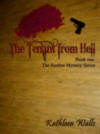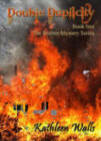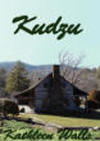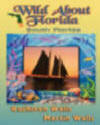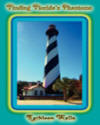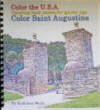
Horne Creek Farm is a living history farm, a
North Carolina Historic Site, and
the actual Hauser family farm (as opposed to many
living history farms that are relocated farm buildings or
rebuilt farm buildings). This is the real thing, allowing
visitors to experience farm life in North Carolina’s
northwestern Piedmont circa 1900. The site features the
family’s original farmhouse (with original furnishings), a
tobacco curing barn, a corn crib, adjacent fields under
cultivation, and even a heritage apple orchard. The Site also
offers programs ranging from old fashioned ice cream socials
to an annual corn shucking frolic. There is a visitors' center
with exhibits and a gift shop. This living history is a chance
to learn about the rural past, a chance to see, smell, touch,
and hear things once common in rural North Carolina.
A little bit of luck or planning is
necessary to participate in the special activities like white
oak basket making workshops, the annual corn shucking, or
savoring old-fashioned apple varieties. But no planning is
necessary to encounter farm animals of all but vanished breeds
kept on the Hauser Farm, drawing water from a well with a
bucket, sheep shearing, or listening to a talk on how to cook
on wood stove. The staff is anxious to share experiences and
insights into what life on a North Carolina farm was like at
the beginning of the twentieth century.
One of the first things you’ll see on
your walk from the visitors center to the farm is the
saddle-notched log tobacco barn, used for curing tobacco.
It is a gable-roofed
building, about 20-foot square, with a cantilevered shed roof
protecting the entrance to the barn. It has a field stone
foundation. Inside are three tiers of poles for hanging
tobacco sticks run lengthwise in the barn’s interior.
 |
| The Tobacco Barn. |
 |
| Inside the tobacco barn. |
Near the tobacco barn is the apple
orchard, with a molasses press and vat used to make sorghum
molasses. During demonstrations the press would be powered by
mules or horses. The 850-tree Southern Heritage Apple Orchard
features more than 425 varieties of old southern apples, many
of which are on the brink of extinction. These old
varieties have been sought and collected throughout the south
by dedicated "apple hunters" to stem the loss of this unique
part of North Carolina agricultural heritage.
 |
| The
molasses press. |
 |
| The vat used to boil sorghum
juice into molasses. |
The Hauser House is certainly a main
highlight. It is a two-story, three-bay log building with
weatherboard sheathing and a wood-shingled gable roof.
Construction took place around 1880 and the house was
remodeled in 1900. A two-story, hip-roofed front porch is an
original feature, with turned post and balusters. At the rear
is a gable-roofed, one- and-one half story log rear ell which
includes a kitchen, dining room, and storage room, accessible
via a covered porch. Notice that the house and kitchen/dining
room were constructed with hewn logs and half-dovetail
notching. The foundation is field stone with clay mortar.
There is a full stone basement under the front section. Most
impressive are the furnishings inside. Most are original or
close replicas of what would have been in the house. Rooms are
fully furnished and visitors are allowed full access to rooms.
There is plenty to see in the house.
 |
| View of front of Hauser House. |
 |
| From the back, the additions
to the Hauser House can be seen. |
 |
| House furnishing are very authentic |
 |
|
An old-fashioned kitchen. |
The double-crib barn, built about 1846,
is a second highlight. It is a half-dovetailed structure with
large hand-hewn, loosely-fitted timbers without chinking. The
four animal pens on the ground level have dirt floors, while
the loft is floored with planks. A narrow shed roof protects
the north (front) elevation of the bam, while a shed addition
shelters livestock at the rear elevation.
 |
| The double crib barn. |
 |
| Notice the double-crib barn
is a half-dovetailed structure, with large hand-hewn, loosely-fitted timbers, without caulking |
Near the barn are some of the more
interesting animals, like goats and sheep that would have been
on the Hauser farm. If you can coax them, they might come up
to the fence.
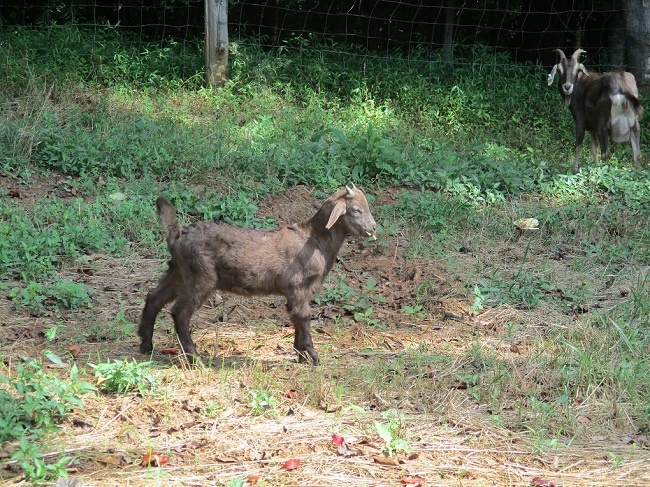 |
| You’ll see tiny little goats... |
 |
|
…
And lots of sheep. |
A fruit and vegetable dry house was
constructed to demonstrate a historic method of drying fruit
and vegetables. The smokehouse is a half-dovetailed log
structure with weatherboard gables and a standing-seam tin
roof. Notches cut in the logs at ceiling height may have
received poles for hanging meat.
 |
| The fruit and vegetable dry
house. |
 |
| The smokehouse. |
Other structures include a
wellhouse/washhouse, corn crib, and fruithouse. There is a
family cemetery. The visitors center has plenty of displays
and equipment is displayed throughout the farm.
 |
| Tools, equipment, and even
quilts are in in visitors center. |
If you want a taste of how farms operated
at the turn of the twentieth century, this is the place to go.
It is relatively hands-on with a super staff that explains
everything. Plus, if you plan well, there are lots of
opportunities for demonstrations and field days. Not to
mention the animals for the kids. It’s a great place to spend
a day.
Author/Photographer. Tom Straka is an emeritus professor of forestry at Clemson University. He has an interest in history, forestry and natural resources, natural history, and the American West. Pat Straka is a consulting forester and the photographer on most of their travel articles. They reside in South Carolina, but have also lived in Mississippi and Virginia.
Public Disclosure--
Please Read
As an Amazon Associate, I earn from qualifying purchases.
The FTC has a law requiring web sites to
let their readers know if any of the stories are
"sponsored" or compensated. We also are to let readers know if any of
our links are ads. Most are not. They are just a way to
direct you to more information about the article
where the link is placed. We have several ads on
our pages. They are clearly marked as ads. I think readers are smart
enough to know an ad when they see one but to obey the
letter of the law, I am putting this statement here to
make sure everyone understands. American Roads and
Global Highways may contain affiliate links or ads. Further, as
their bios show, most of the feature writers are
professional travel writers. As such we are frequently
invited on press trips, also called fam trips. On these
trips most of our lodging, dining, admissions fees and
often plane fare are covered by the city or firm hosting
the trip. It is an opportunity to visit places we might
not otherwise be able to visit. However, no one tells us
what to write about those places. All opinions are 100%
those of the author of that feature column.
We'd love your comments!




















